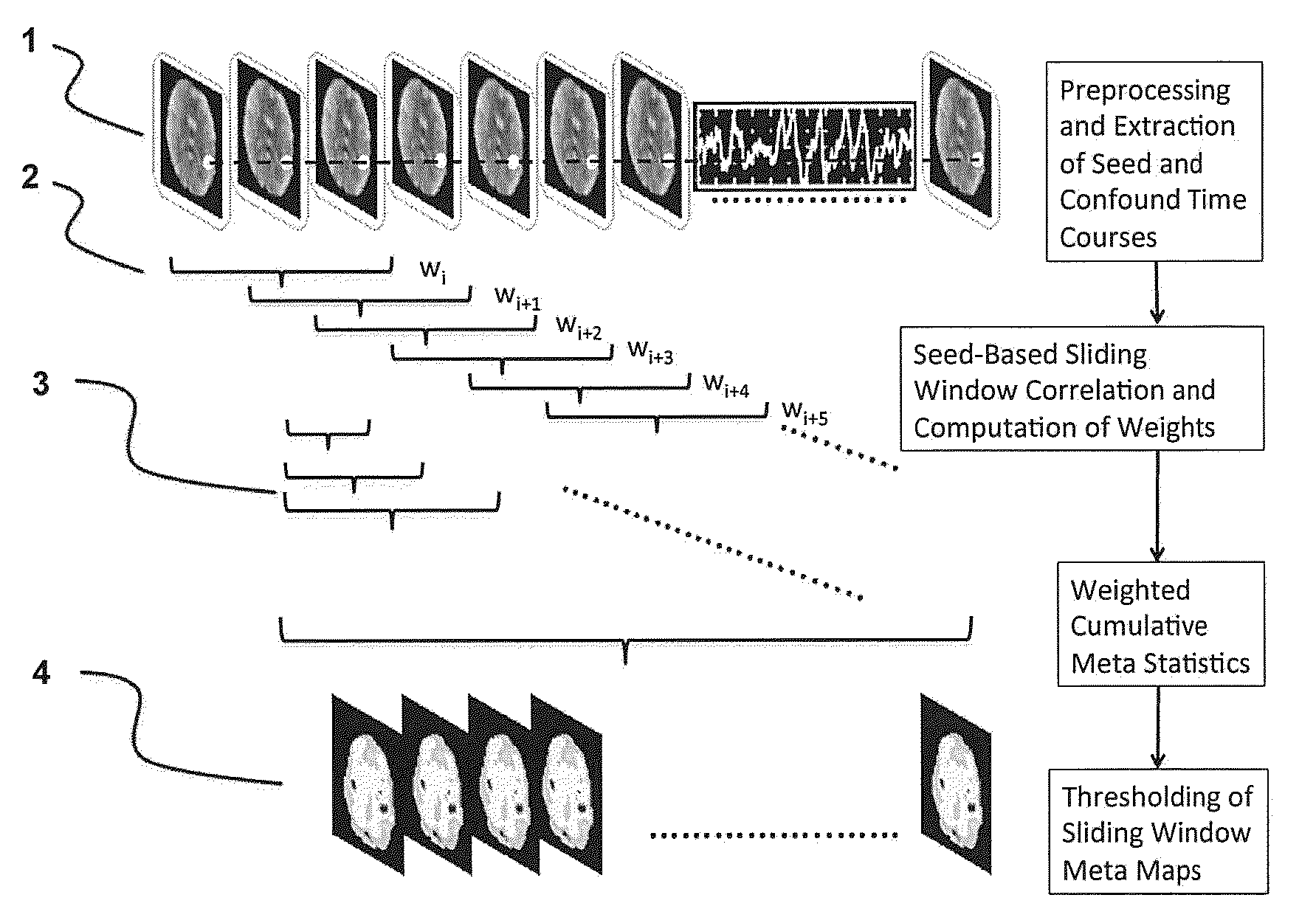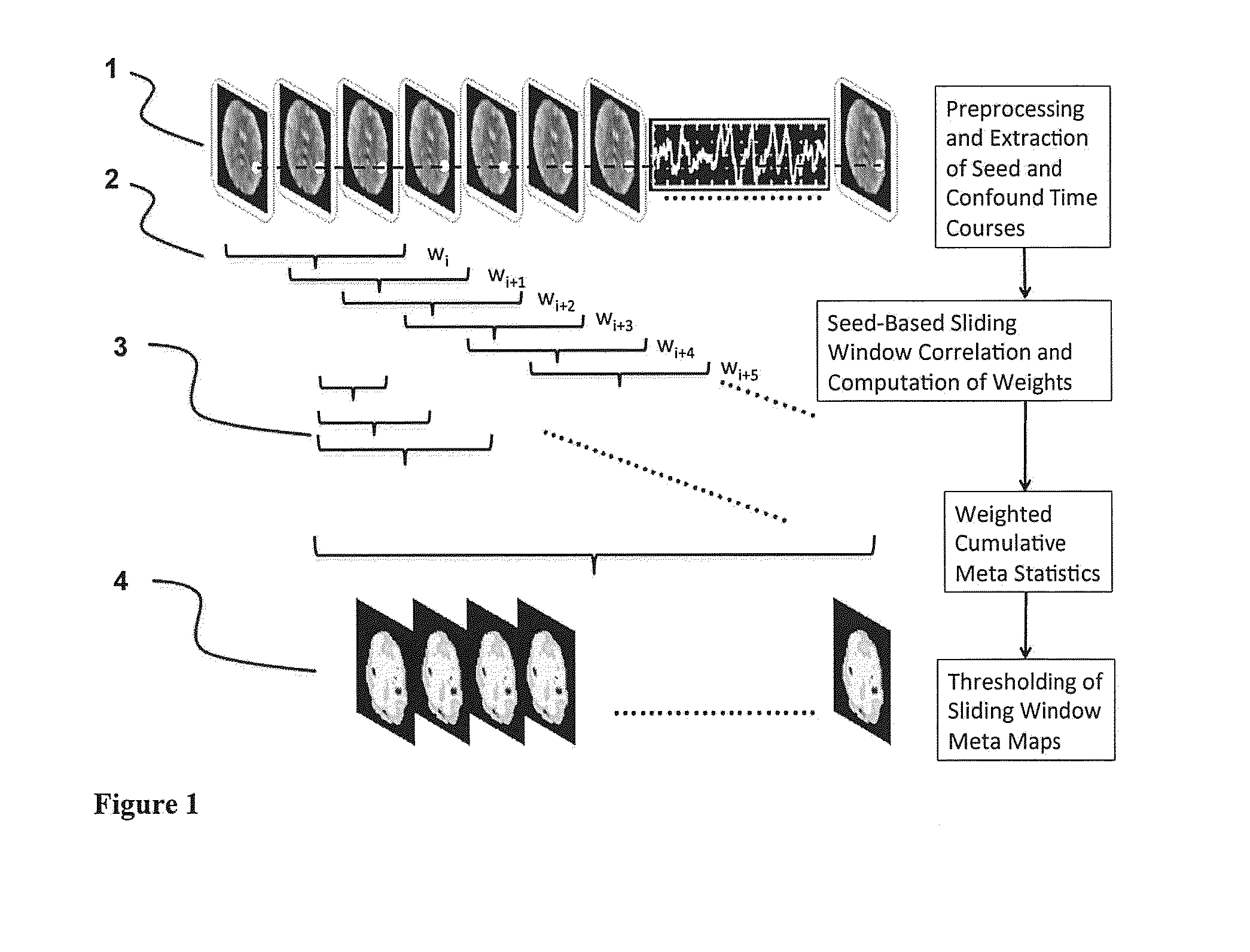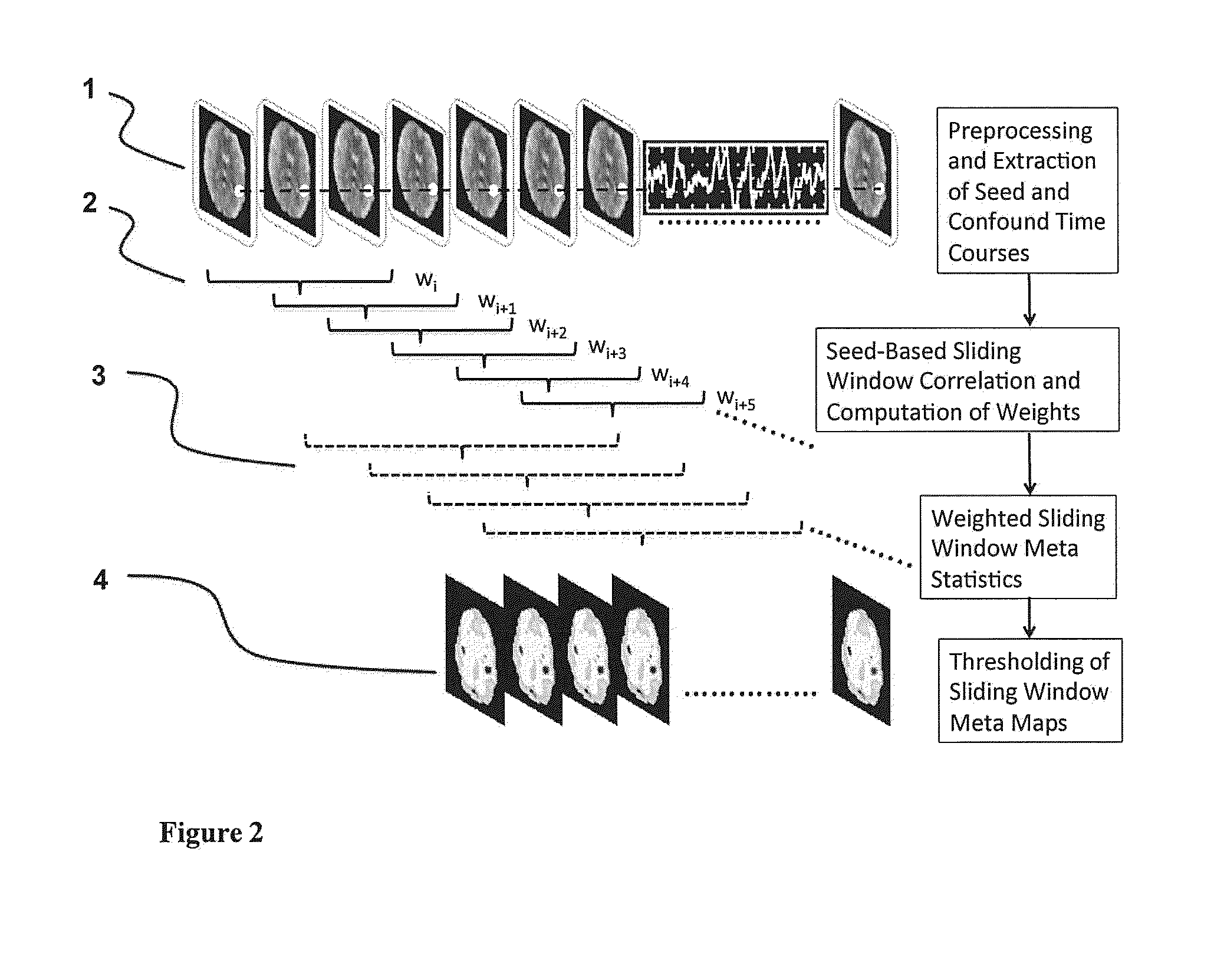Seed-Based Connectivity Analysis in Functional MRI
- Summary
- Abstract
- Description
- Claims
- Application Information
AI Technical Summary
Benefits of technology
Problems solved by technology
Method used
Image
Examples
Embodiment Construction
[0030]The invention employs seed-based correlation analysis across a short sliding window and a running mean and a running standard deviation across the dynamically updated Z-transformed correlation maps, which as our computer simulations and preliminary data show, is highly effective for detecting resting state signal fluctuations and for suppressing confounding signals of no interest in resting state fMRI without relying on regression of confounding signals. Movements and rapidly changing confounding signals, which create strong correlations in conventional seed-based resting state analysis, are strongly reduced using this meta-statistics approach. Performing this meta-statistics approach using a sliding window enables mapping of dynamic changes in connectivity during the scan. Moreover, the computational performance of the methodology considerably exceeds that of conventional seed-based analysis methods using regression of confounding signals. This approach is therefore suitable ...
PUM
 Login to View More
Login to View More Abstract
Description
Claims
Application Information
 Login to View More
Login to View More - R&D
- Intellectual Property
- Life Sciences
- Materials
- Tech Scout
- Unparalleled Data Quality
- Higher Quality Content
- 60% Fewer Hallucinations
Browse by: Latest US Patents, China's latest patents, Technical Efficacy Thesaurus, Application Domain, Technology Topic, Popular Technical Reports.
© 2025 PatSnap. All rights reserved.Legal|Privacy policy|Modern Slavery Act Transparency Statement|Sitemap|About US| Contact US: help@patsnap.com



